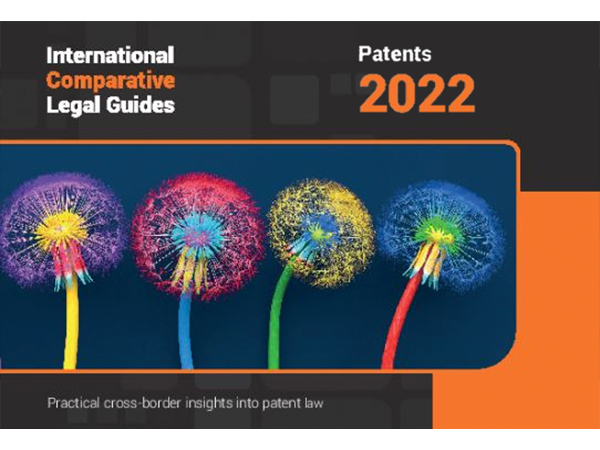
Intellectual Property
Viewpoints
Filter by:
District of Delaware Dismisses ANDA Applicant for Lack of Venue under TC Heartland
October 24, 2018 | Blog | By Adam Samansky, Peter Cuomo, Joe Rutkowski
On October 18, 2018, the United States District Court for the District of Delaware, in Bristol-Myers Squibb v. Mylan Pharmaceuticals Inc., No. 17-00379, held that venue was not proper in Delaware over Mylan Pharmaceuticals Inc. (“MPI”) in connection with a claim for patent infringement arising from Mylan’s submission of an Abbreviated New Drug Application (“ANDA”) seeking approval to market a generic version of the drug, apixaban.
Read more
ALJ Cheney Holds that IPR Estoppel Does Not Apply to ITC Investigative Staff
October 18, 2018 | Blog | By Andrew DeVoogd, Daniel Weinger
In an Initial Determination finding that Fujifilm violated Section 337 by infringing two patents held by Sony, ALJ Cheney found another patent invalid after ruling that inter partes review (“IPR”) estoppel does not apply to the International Trade Commission’s (“ITC”) Office of Unfair Imports Investigations (“OUII”) Staff. In Magnetic Tape Cartridges and Components Thereof, Investigation 337-TA-1058, ALJ Cheney remarked that even if IPR estoppel prevents a respondent from raising certain references during an investigation before the ITC, IPR estoppel does not prevent Staff from raising those same references to invalidate a patent where Staff was not a party to the IPR. Id. at 106-07.
Read more
Patent Infringement Claim Involving Complicated Technology May Require Additional Detail in Complaint
October 18, 2018 | Blog | By Andrew DeVoogd
A recent opinion from the Northern District of Texas is a reminder to all patent practitioners to heed pleading standards when drafting a complaint for patent infringement. In Lexington Luminance LLC v. Service Lighting and Electrical Supplies, Inc. d/b/a 1000bulbs.com, 3-18-cv-01074 (TXND October 9, 2018, Order), the court denied the defendant, Service Lighting and Electrical Supplies, Inc. d/b/a 1000bulbs.com’s (“1000bulbs”) request to dismiss the case for failure to meet the pleading standard, but granted its alternative request for a more definite statement. The plaintiff, Lexington Luminance LLC (“Lexington Luminance”), is now required to provide a more detailed complaint.
Read more
Strategies to Unlock AI’s Potential in Health Care, Part 1: Common Pitfalls to Avoid When Getting a Patent
October 12, 2018 | Blog | By Christina Sperry
As in any technology area, it is important to consider patent protection early in the development of an AI-related invention. However, AI inventions raise a number of particular issues that, if not addressed fully or at the right time, could be fatal to securing U.S. patent protection that would otherwise be available to prevent others from making, using, selling, or importing the invention. This article identifies common pitfalls in getting a patent for AI inventions and provides insights on how to avoid them. These principles apply not only to AI-related inventions, but also to digital health inventions more broadly.
Read more
PTAB Adopts the Phillips Claim Construction Standard in AIA Proceedings
October 11, 2018 | Blog | By Brad M Scheller , Daniel Weinger, Courtney Herndon
Today the Patent Trial and Appeal Board announced a final rule changing the claim construction standard for interpreting claims in inter partes review (“IPR”), post-grant review (“PGR”), and covered business method patent (“CBM”) proceedings. The Board retired the broadest reasonable interpretation (“BRI”) standard in favor of the standard used to construe patent claims in federal court and the International Trade Commission (“ITC”) as articulated in Phillips v. AWH Corp. In doing so, the Board announced that it will now consider prior constructions, either from a federal district court or the ITC, in construing a claim term in an IPR, PGR, or CBM, where such prior constructions are timely made of record. This rule change is another positive development for patent owners and should provide for consistent construction of the same term across multiple tribunals going forward.
Read more
Federal Circuit Upholds Trade Show Catalog As Prior Art in Nobel Biocare Servs. AG v. Instradent USA, Inc.
September 25, 2018 | Blog | By Peter Cuomo, Courtney Herndon
Recently in Nobel Biocare Services AG v. Instradent USA, Inc., the Federal Circuit affirmed a decision of the U.S. Patent and Trademark Office’s Patent Trial and Appeal Board (“the Board”) in an inter partes review (“IPR”) finding certain claims of U.S. Patent No. 8,714,977 (“the ’977 Patent”), directed to dental implants, unpatentable as anticipated. The Nobel decision is the latest in a recent line of Federal Circuit cases holding that materials distributed at conferences, trade shows, and meetings are publically available “printed publications” within the meaning of pre-AIA 35 U.S.C. § 102(b).
Read more
PTAB Finds Recycled Art and Advanced State of Parallel District Proceeding Warrant Denial of IPR Trial
September 17, 2018 | Blog | By Peter Snell, Daniel Weinger
Last week the Patent Trial and Appeal Board (“PTAB”) provided yet another arrow in the patent owner’s quiver for defending against institution of IPRs. In NHK International Corp. v. Intri-Plex Technologies, Inc., IPR2018-00752, the PTAB exercised its discretion under 35 U.S.C. § 325(d) and denied institution because the asserted art was already considered during the original examination of the patent. The PTAB also found that denial was warranted under 35 U.S.C. § 314(a) in light of the additional factor that a district court trial on the same patent was imminent.
Read more
RPX Requests en banc Review in Applications in Internet Time v. RPX
September 13, 2018 | Blog | By Peter Snell, Daniel Weinger
On September 7, 2018, RPX Corporation (“RPX”) requested a rehearing en banc of the Federal Circuit’s July 2018 Applications in Internet Time, LLC v. RPX Corp. decision, which held that the Patent Trial and Appeal Board (“PTAB”) must use a flexible approach when determining what entities constitute real parties in interest for the purpose of inter partes review (“IPR”).
Read more
PTAB Denies Institution of IPR after Successive Petitions by Unrelated Co-Defendants
September 11, 2018 | Blog | By Brad M Scheller , Daniel Weinger, Courtney Herndon
Last week, the Patent Trial and Appeal Board (the “Board”) denied a second challenge to a patent where the petitioners were co-respondents in an ITC investigation.
Read more
Federal Circuit Holds that the Petitioner Bears the Burden to Show All Real Parties in Interest are Properly Named in a Petition for IPR
September 10, 2018 | Blog | By Peter Snell, Daniel Weinger, Anthony Faillaci
Six months later, and more than 2.5 years after service of the complaint on Activision, Bungie filed IPRs challenging Worlds’ patents.
Read more
Massachusetts Adopts Uniform Trade Secrets Act
September 6, 2018 | Blog | By Michael Renaud, Nicholas Armington
On October 1, 2018, Massachusetts will become the 49th state to adopt a version of the Uniform Trade Secrets Act. The version of the UTSA that Massachusetts will adopt bears notable similarities to the Defend Trade Secrets Act, the two year old federal trade secrets statute.
Read more
Not just for crypto – How blockchain technology will affect medical devices
September 4, 2018 | Blog | By Lisa Adams
Most people are familiar with blockchain technology because of its use in cryptocurrency, but its use is going to be far more widespread than just as a ledger for digital currency.
Read more
A Sales Agent’s Home Office May Qualify as a Regular and Established Place of Business
August 20, 2018 | Blog | By Andrew DeVoogd, Daniel Weinger, Anthony Faillaci
In our continued post-TC Heartland coverage, the Southern District of New York recently held that an employee’s home office in New York constituted a “regular and established place of business” in the state as required by the patent venue statute, 28 U.S.C. § 1400(b).
Read more
Updates to the PTAB Trial Practice Guide Memorialize Current Practices While Leveling the Playing Field for Patent Owners
August 16, 2018 | Blog | By John Bauer
The Patent Trial and Appeal Board (PTAB) issued an August 2018 update to the American Invents Act Trial Practice Guide (the “Updated TPG”). The Updated TPG incorporates the PTAB’s current practices and provides further explanation of certain aspects of the PTAB’s standard practices to the public.
Read more
Google’s servers housed by a third-party ISP qualify as a regular and established place of business to establish proper venue in the Eastern District of Texas
August 15, 2018 | Blog | By Andrew DeVoogd, Anthony Faillaci
In our continued post-TC Heartland coverage, Judge Gilstrap in the Eastern District of Texas recently held that venue was proper because Google exercises exclusive control over physical servers implicated by the litigation, as well as the physical space within which the server is located and maintained.
Read more
Lessons about Prosecution History Estoppel and Design Patents from Advantek Marketing, Inc. v. Shanghai Walk-Long Tools Co.
August 3, 2018 | Blog | By Christina Sperry
Patent practitioners are probably well familiar with circumstances in which prosecution history estoppel can limit the scope of a U.S. utility patent’s claims. Examples include claim amendments and statements made by the applicant during prosecution in papers filed with the U.S. Patent and Trademark Office (USPTO).
Read more
Improper Venue for Web-Based Company in light of In re Cray
August 2, 2018 | Blog | By Andrew DeVoogd, Anthony Faillaci
In our continuing post-TC Heartland coverage, the District of Nevada recently identified a key factor in analyzing venue challenges in patent litigation: whether the public can access the defendant corporation or its services in the respective forum.
Read more
Patent Specification Drafting Considerations Highlighted by TF3 Limited v. TRE Milano, LLC
August 2, 2018 | Blog | By Christina Sperry
Is there any possible danger in using the abbreviation “i.e.” in the specification of a U.S. patent application? The Federal Circuit’s recent decision in TF3 Limited v. TRE Milano, LLC shows that the answer is “yes.”
Read more
When Public Use Qualifies for the Experimental Use Exception to 35 U.S.C. § 102(b)
July 24, 2018 | Blog | By Marc Morley, Melissa Brayman
Some inventions require testing before they are ready for patenting, and sometimes that testing requires use by the public. A recent decision from the Federal Circuit provides additional guidance on what activities qualify for the experimental use exception to the public use bar of 35 U.S.C. § 102(b).
Read more
The U.S. Trademark Office Adopts New Rule Requiring Appointment of U.S. Counsel to Represent a Non-US Domiciliary in Trademark Matters
July 18, 2018 | Blog | By Susan Neuberger Weller, F. Jason Far-hadian
Effective August 3, 2019, the United States Patent and Trademark Office (USPTO) will require foreign entity applicants, registrants, or parties to a trademark proceeding whose domicile is not located within the United States or its territories to be represented by qualified U.S. counsel (i.e., an attorney who is an active member of a state bar in the U.S.).
Read more
Explore Other Viewpoints:
- Antitrust
- Appellate
- Arbitration, Mediation & Alternate Dispute Resolution
- Artificial Intelligence
- Awards
- Bankruptcy & Restructuring
- California Land Use
- Class Action
- Complex Commercial Litigation
- Construction
- Consumer Product Safety
- Cross-Border Asset Recovery
- Debt Financing
- Direct Investing (M&A)
- Diversity
- EB-5 Financing
- Education & Nonprofits
- Employment
- Energy & Sustainability
- Environmental Enforcement Defense
- Environmental Law
- FDA Regulatory
- Federal Circuit Appeals
- Financial Institution Litigation
- Government Law
- Growth Equity
- Health Care
- Health Care Compliance, Fraud and Abuse, & Regulatory Counseling
- Health Care Enforcement & Investigations
- Health Care Transactions
- Health Information Privacy & Security
- IP Due Diligence
- IPRs & Other Post Grant Proceedings
- Immigration
- Insolvency & Creditor Rights Litigation
- Institutional Investor Class Action Recovery
- Insurance & Financial Services
- Insurance Consulting & Risk Management
- Insurance and Reinsurance Problem-Solving & Dispute Resolution
- Intellectual Property
- Investment Funds
- Israel
- Licensing & Technology Transactions
- Life Sciences
- Litigation & Investigations
- M&A Litigation
- ML Strategies
- Medicare, Medicaid and Commercial Coverage & Reimbursement
- Mergers & Acquisitions
- Patent Litigation
- Patent Prosecution & Strategic Counseling
- Pharmacy Benefits and PBM Contracting
- Portfolio Companies
- Privacy & Cybersecurity
- Private Client
- Private Equity
- Pro Bono
- Products Liability & Complex Tort
- Projects & Infrastructure
- Public Finance
- Real Estate Litigation
- Real Estate Transactions
- Real Estate, Construction & Infrastructure
- Retail & Consumer Products
- Securities & Capital Markets
- Securities Litigation
- Special Purpose Acquisition Company (SPACs)
- Sports & Entertainment
- Strategic IP Monetization & Licensing
- Tax
- Technology
- Technology, Communications & Media
- Technology, Communications & Media Litigation
- Trade Secrets
- Trademark & Copyright
- Trademark Litigation
- Venture Capital & Emerging Companies
- White Collar Defense & Government Investigations
- Women's Health and Technology







